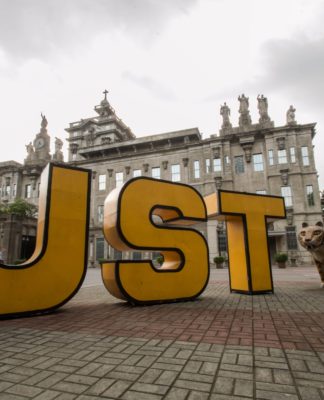Lyka Cervantes, 18, loves munching American potato chips. Every time this junior Science student goes to the supermarket, she never fails to include a bag or two of potato chips, unmindful whether her favorite snack has Genetically Modified Organism (GMO) ingredients or not.
GMOs are crops, and animals which incorporate beneficial traits by changing chemical composition of products, improving on their poor characteristics, and fortifying their vitamins and minerals in foods.
The GMO debate
The lack of concrete scientific evidence on the safety of GMOs has divided lawmakers globally. In the Philippines, the debates are still raging on.
Kilusang Magbubukid ng Pilipinas Chair Rafael Mariano filed House Bill 2124 or the GMO-free Food and Agriculture Act of 2004, prohibiting the entry, sale, field testing, and release of GMO crops and food.
“Genetic engineering in food crops is relatively new. However, there have been many cases discovered which should tell us that genetically modified products could seriously harm human beings and the environment,” Mariano said.
The term GMO is quite new to the ears of the Filipinos, but their presence in the food and farming industries cannot be denied.
“The loss of biodiversity in food will surely have an effect in the body. One of the major health concerns with genetically modified foods is its potential to increase allergies,” said Dr. Marcia Mendoza of the Dietary Department of the UST Hospital. “There are no reliable ways to test GM foods for allergies.”
Also, Marikina City Rep. Del de Guzman introduced the Genetically Engineered Food Right to Know Act requiring the mandatory labeling of GMO foods and products. The bill will serve as the right of the people to know if the products they buy are genetically modified or not.
“The health-conscious consumer has no way of knowing the ingredient without these labels. If genetically modified foods are safe, then it should be properly labeled with what ingredient is used,” Mendoza said.
Several European nations have also passed laws aiming to regulate GMOs. These laws place responsibility and assign liability on GMO farmers.
The United States, the principal global exporter of GMO products, has also faced difficulty in promoting GMOs from Europe to Asia. However analysts see the tide turning in favor of GMO products as Asia has began accepting GMOs due to growing populations that its countries cannot feed. Thailand, one of Asia’s major agricultural nations, has allowed field trials of GMOs.
“The industry has a lot of scientists and they insist that (GMOs) are safe. But there are other scientists, independent scientists in the academe and on the other fields, who say that they are not safe and that there are a number of indications which suggests potential harm. It can be harm to people, harm to animals or to the environment,” Roberto Verzola, a member of an environmentalist group, said.
“Reviewing all the data available about GMOs, scientists have not really agreed conclusively that GMOs are safe. There is still an ongoing debate, a very deep debate about whether GMOs are safe or not,” Verzola told the Varsitarian.
Verzola said students should be involved in this issue since Filipinos are not generally knowledgeable whether they are eating good food or not. “GMOs may have long term effects to health,” Verzola said. “So at least students should have the option themselves to decide.”
More than food safety, the trouble of GMOs is irreversibility. Once released into nature, these engineered organisms can never be recalled; therefore precautions should be a maximum concern, Verzola said.
Engineering Life
According to the Philippine Council for Advanced Science and Technology Research and Development (PCASTRD), improvement of organisms and products becomes faster with genetic engineering. Breeding desired traits through a trial-and-error method gives a wider range of variety. In addition, crops that underwent genetic engineering are designed to grow anywhere, ensuring faster production.
In medicine, genetic engineering has been noted to improve and produce life-saving drugs and vaccines. It is utilized in the inspection of genetic diseases, gene therapy, and DNA forensic analysis.
Genetic engineering also presents a development from the conventional organic acids, enzymes, crops and organisms that are more resistant to deficiencies and viruses.
“(Even if) it can improve the food industry by increasing yield, improve the quality of the food, and is cost effective, (people) must do it with moderation,” said Prof. Josefino R. Castillo of the Department of Biological Sciences at the College of Science.
GMOs have existed years before the government first assumed planting rice in the country.
“As before in the International Rice Research Institute (IRRI), although not in terms of modifying the genes as we are doing now, we splice the genes and then we insert (these) genes (to other organisms). They do it selectively at IRRI even in the 70s and in the 80s,” Castillo added.
GMOs were commercialized in the country in 2000, and had existed in the Philippine market without the knowledge of most Filipinos.


















